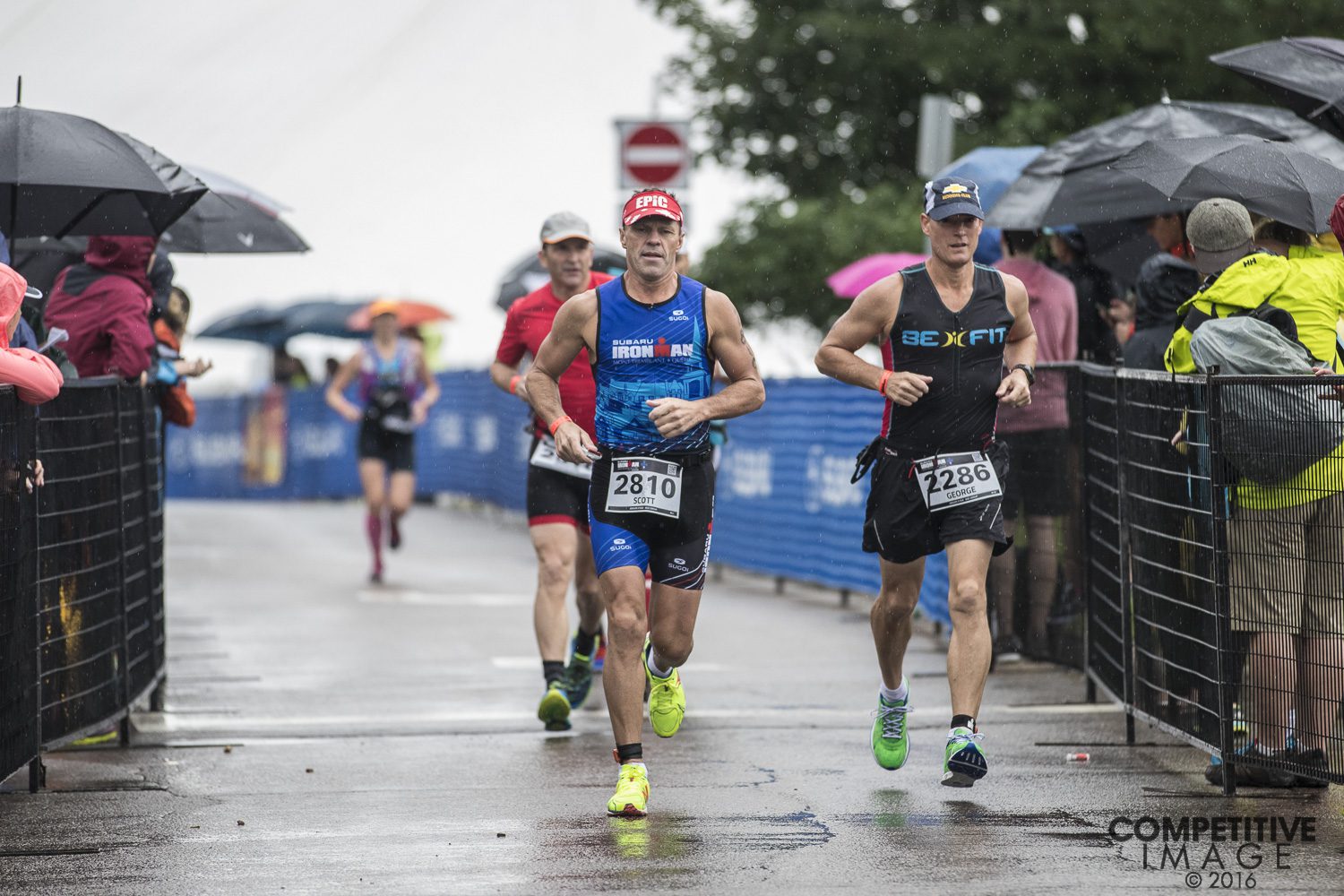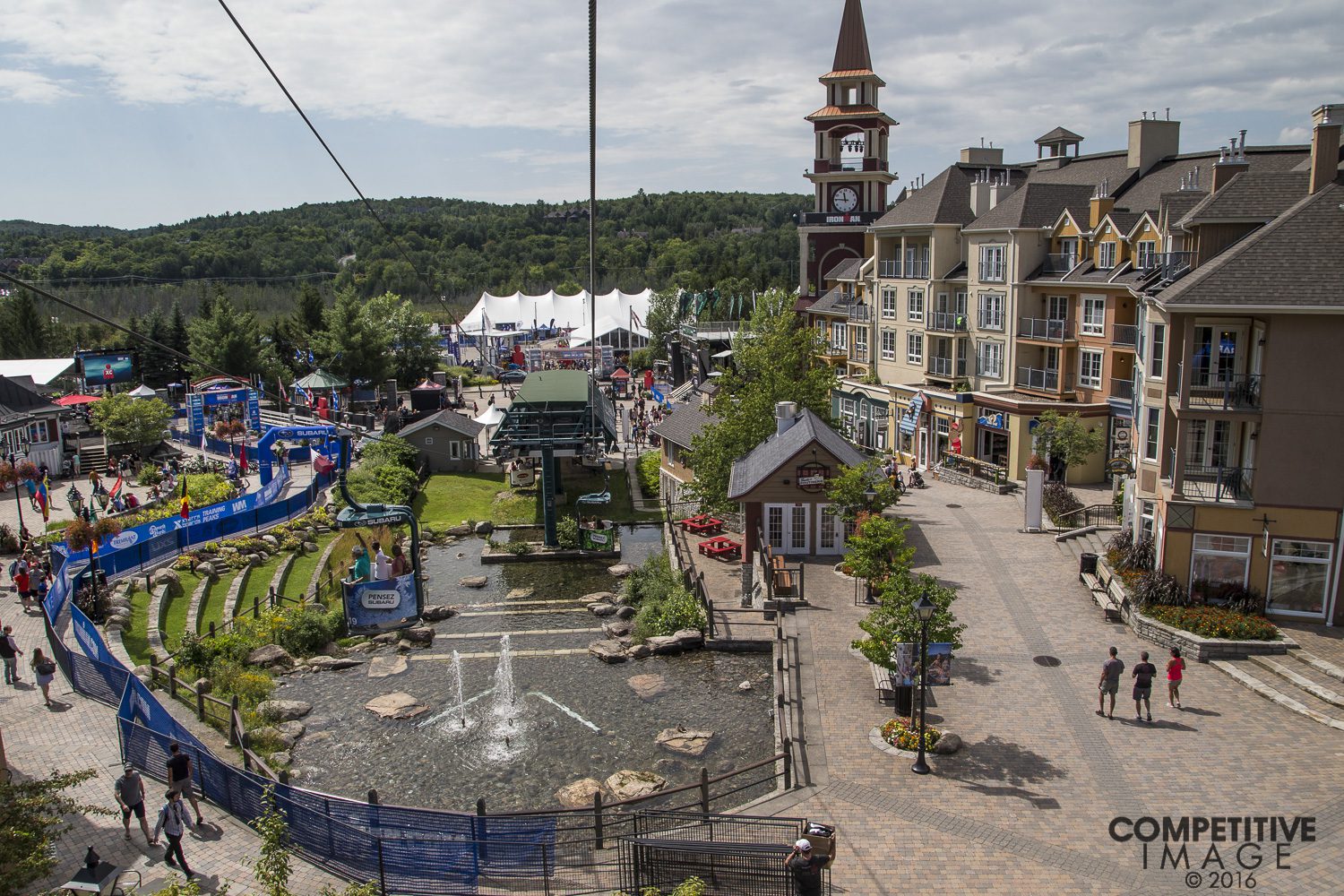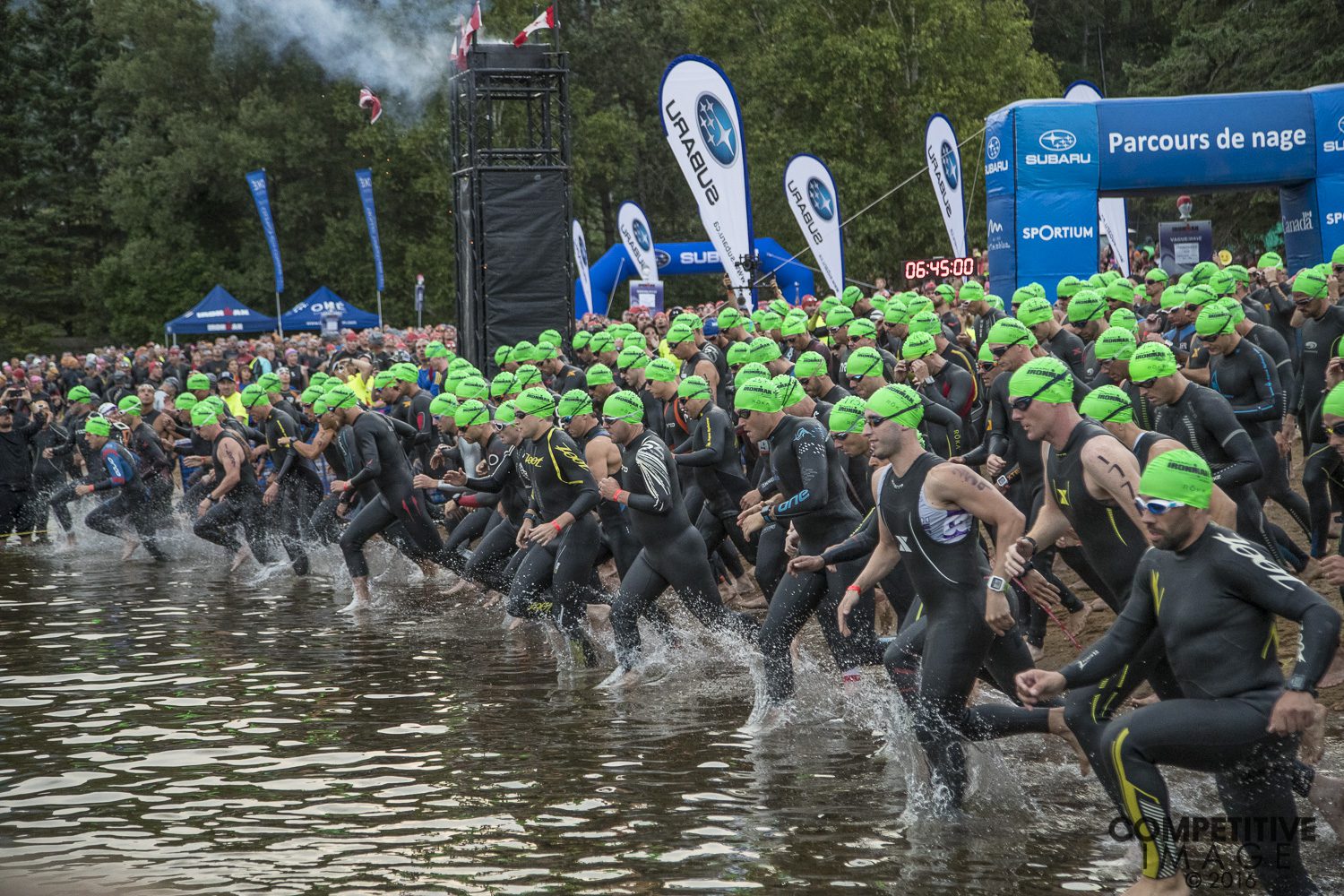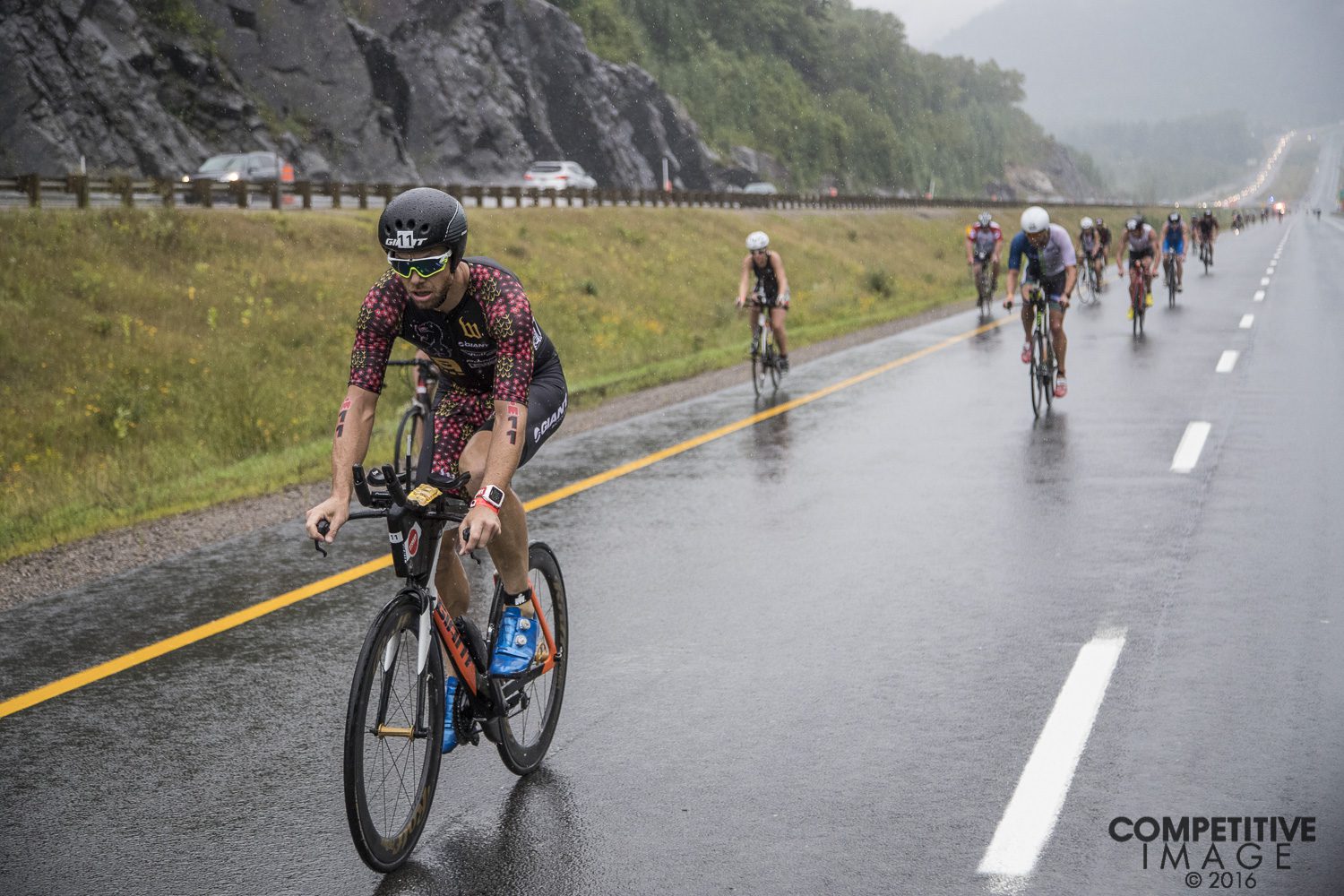Course preview: Tips for this weekend’s Ironman Mont-Tremblant
All the tips you need for the course at this weekend's Ironman Mont-Tremblant.

— By Luke Yates
The Canadian Ironman series heads back to Quebec this weekend with the 2017 edition of the iconic Ironman Mont-Tremblant. Set in a beautiful ski village, the scenic event includes a one lap swim and two laps on the bike and run. Here is our preview of the course for this weekend.
Swim
The swim takes place in Tremblant Lake is a wonderful on lap course. The water is likely to be reasonably warm but still wetsuit legal and is considerably more straightforward than many other swims on the circuit.
The swim starts at the beach and tennis club and heads straight out for over a mile. The initial entry to the swim is a little tight, with a seawall on one side, so competitors can ease in for the first 30m, before the whole lake opens up in front of them. Sighting should be reasonably easy as the buoys are in one long line and the mountains surrounding the lake should offer the opportunity to pick a spot in the distance to sight on for nearly half the swim. One point to note is that is a fairly unique mental challenge to swim in a completely straight line for more than 1500m, so athletes should prepare for the lack of turns that normally break up the course into sections.
The second half of the swim mirrors the first, with two sharp turns and then over 1.5km straight back into the swim exit, just around the lake from the start. There is then a short run of about 400m into T1.
Bike
The bike course is two loops and offers some short, challenging climbs and thrilling descents. The road surface is generally excellent, meaning a comfortable and fast ride. Each loop can be broken down into four sections. First up is an up and down ride to the highway. Most of the hills are short but not too punchy, and there will be a lot of benefit in saving the leg for later in the ride.
There is then an out-and-back section with plenty of rollers and false flats. Learning to take the ascents with steady power and then attacking the crest and initial part of the descent is a strategy that should gain riders a lot of time over the course of the race. The out-and-back is followed by a tough climb in returning to the village before a final very hilly section and fast descent to the midpoint of the bike leg. This is then repeated, and the final downhill for the last 7km into T2 gives a great opportunity to spin out the legs before the run.
The bike leg is tough, with 1800m of total elevation gain. But for the smart cyclist, it offers a fair test and a good chance to head out on to the run in good shape.
Run
The Ironman Mont-Tremblant run course is a real challenge. Leaving T2, runners immediately head into a tough stretch. This includes a very steep climb for a few hundred metres, and unless you are feeling fantastic, power-walking this part may make your race later in the day, even if it feels counterintuitive at the time. This is immediately followed by a section of rollers, with a fairly steep descent at one point. It is important to maintain form and keep a decent cadence through this, as there is a long way to go and forcing it at this stage will make it hard to settle into a rhythm off the bike.

The course then heads out on to the Le P’tit Train du Nord, a former rail bed that only has minor elevation changes for about 7km. This provides some relief from the hills, but they return soon enough, with a few more rollers heading back to transition and the start of the second lap. Then comes that challenging section again and a repeat of lap one before you can call yourself a finisher at Ironman Mont-Tremblant!




